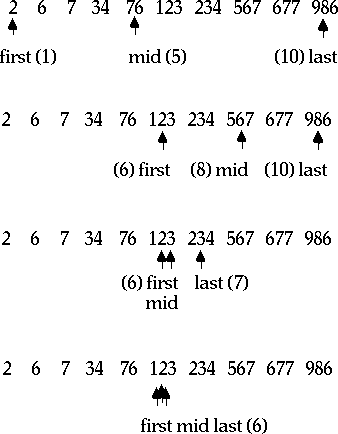Binary search is the algorithm we discussed in class for finding names in a phone book. The picture below describes graphically searching for the number 123:

Assume we have a phone book (sorted by last name) with 4 entries, what is the maximum number of comparisons one must do to find a the entry for Jeff Forbes using binary search? (1 point)
solution: